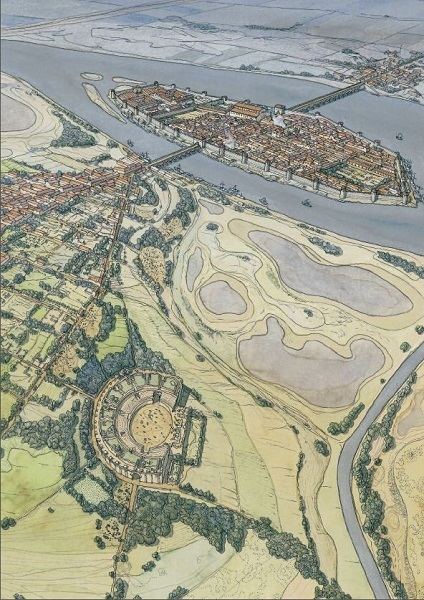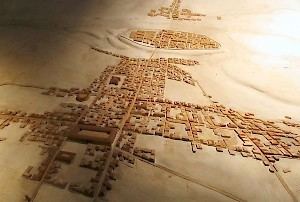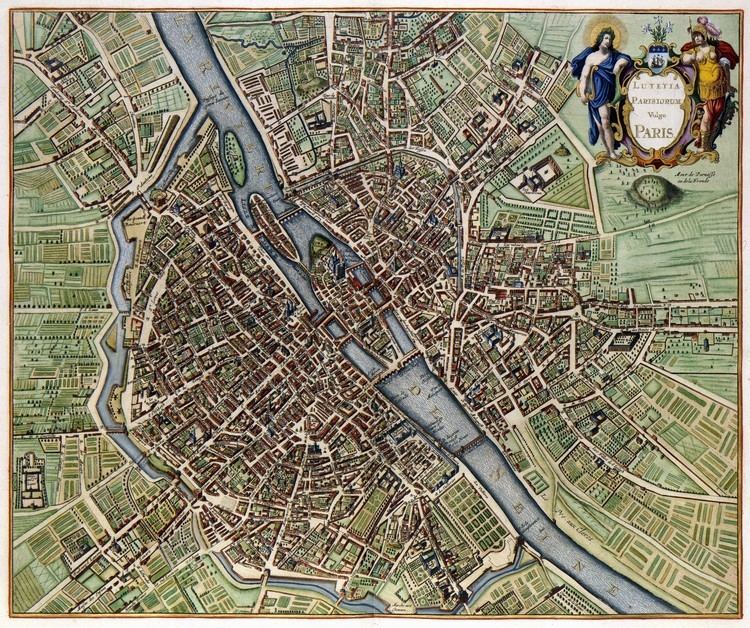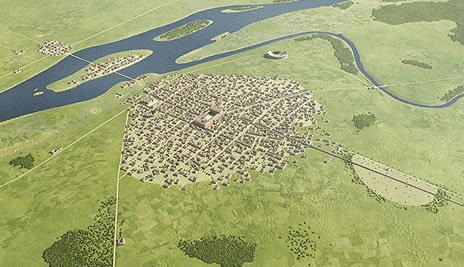Caesar 3 mission 8b lutetia military playthrough hd
The Gallo-Roman city of Lutetia (also Lutetia Parisiorum in Latin, in French Lutèce) was the predecessor of present-day Paris.
Contents
- Caesar 3 mission 8b lutetia military playthrough hd
- Lutetia seuil
- Etymology
- Gallic origins
- Roman Lutetia
- Later Events
- Present day remains
- May 2006 findings
- Popular culture
- Legacy and namesakes
- References
Lutetia seuil
Etymology

The city was referred to as "Λουκοτοκία" by Strabon, "Λευκοτεκία" by Ptolemeus and "Lutetia" by Julius Caesar. The origin of this name is uncertain.

The name may contain the Celtic root *luco-t-, which means "mouse" and -ek(t)ia, meaning "the mice" and which can be found today in the Breton word logod, the Welsh llygod, and the Irish luch.

Alternatively, it may derive from another Celtic root, luto- or luteuo-, which means "marsh" or "swamp" and which survives today in the Gaelic loth ("marsh") and the Breton loudour ("dirty"). As such, it would be related to other place names in Europe including Lutudarum (Derbyshire, England); Lodève (Luteua) and Ludesse (France); and Lutitia (Germany).
Gallic origins

The oppidum of the Gallic tribe of the Parisii was originally believed to be on the Ile de la Cité from Caesar's Gallic Wars.
However, archaeological discoveries between 1994 and 2005 strongly undermine the traditional location of the Ile de la Cite for Gallic Lutece: the discovery of a large area of proto-urban urbanisation (15 hectares) on the current territory of Nanterre.
In 52 BC, a year or so before the end of the Gallic Wars, the Parisii destroyed the bridges to the Ile de la Cité. However the garrison led by Vercingetorix's lieutenant Camulogenus, whose army camped on the Mons Lutetius (where the Panthéon is now situated), fell to the Roman military forces led by Titus Labienus, one of Julius Caesar's lieutenants. The Romans crushed the Gauls at nearby Melun and took control of Lutetia.
Roman Lutetia
The Gallo-Roman city was developed mainly on the hill on the south bank of the river (the Montagne Sainte-Geneviève) where, starting in the 2nd century AD, public works and monuments were constructed. The northern low-lying plain was easily flooded. Under Roman rule, Lutetia was thoroughly Romanised with a population estimated at around 8,000. It did not have a great deal of political importance - the capital of its province, Lugdunensis Senona, was Agedincum (modern Sens, Yonne).
The regular grid-plan of Lutetia marked it as a Roman city. The north-south axis was dictated by the need to cross the marshy riverbanks in the shortest possible distance; several routes converged at the bridgehead. The discovery of ancient paved roads, the established boundaries of the main monuments—the forum at the top of the hill, theatre, baths— even the path of certain medieval roads show that the Roman city was laid out with a module of precisely 300 Roman feet. On the Left Bank, the Rue St-Jacques and on the Right Bank, the Rue St-Martin still follow the Roman main axis (cardo maximus).
Dendrochronological study of wooden pilings beneath the lowest stratum of the Roman north-south axis date the road's construction after 4 AD, more than fifty years after the Roman pacification of the region.
An aqueduct 26 km in length, with a flow rate estimated at 2000 cubic metres a day, provided the city with spring water collected from several points. To bridge the Bièvre valley at Arcueil-Cachan, a bridge was required, whose piers and ruined arches, still discernible, gave rise to the toponym Arcueil.
Later Events
It was Christianised in the 3rd century, traditionally when St Denis became the city's first bishop. The process was not entirely peaceful – in about 250 AD St Denis and two companions were arrested and decapitated on the hill of Mons Mercurius, where Roman foundations have been found, thereafter known as Mons Martyrum (Martyrs' Hill, or Montmartre).
After a barbarian attack in 275 a surrounding wall was built on the Ile de la Cité with a fortified keep.
Lutetia was renamed Paris in 360 AD, taking its name from the Gallic Parisii tribe name. The name had already been used for centuries as an adjective ("Parisiacus"). The legend of the Breton city of Ys suggests a different, if less likely, origin.
Around the same time, the city quarter on the left Seine bank, which housed the baths, the theatres and the amphitheatre, was gradually abandoned with the population being concentrated on the island, which received new fortifications. The classical theatre began to be dismantled during the 4th century.
For the history of the city after its renaming, see the article on Paris.
Present-day remains
Remains of the ancient city are mainly buried below ground although many of these are gradually being discovered. In a small park on high ground in the Latin Quarter of the Left Bank, tucked behind apartment blocks, one may still see some remains of the 1st-century amphitheatre (Arènes de Lutèce). The amphitheatre, built into the slope of the hillside outside the city itself, is commonly referred to as Les Arènes de Lutèce. It was one of the largest such structures in Gaul.
Furthermore, there are the remains of public baths at the Musée de Cluny (frigidarium with vault intact and caldarium) and the Early Christian archeological crypt under the Notre Dame forecourt, now Place of Pope John-Paul II.
Parts of the Aqueduct are visible in some places.
May 2006 findings
In May 2006, a Roman road was found during expansion of the University of Pierre and Marie Curie campus. Remains of private houses dating from the reign of Augustus (27 BC-14 AD) and containing heated floors were found. Everyday items like flowerpots, bronze chains, ceramics, and drawer handles were found. The owners were wealthy enough to own baths found in one of the homes, a status symbol among Roman citizens.
Popular culture
Lutetia is featured in the Asterix adventures. The city first features in Asterix and the Golden Sickle, which almost entirely takes place in and around the city. It is also shown in Asterix and the Laurel Wreath where it is mentioned as the greatest city in the universe along with Rome. Asterix and Obelix also make a brief stop in Asterix and the Banquet.
Lutèce Falco 1991 is also the name of one of Paris Saint-Germain F.C.'s notable former Ultra groups.
The video game BioShock Infinite features a pair of twins called Rosalind and Robert Lutece.
